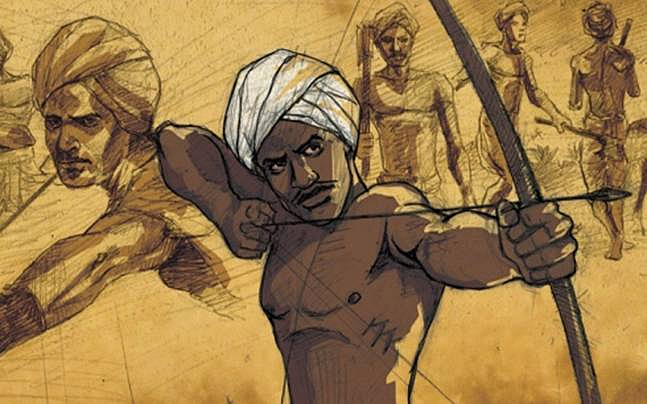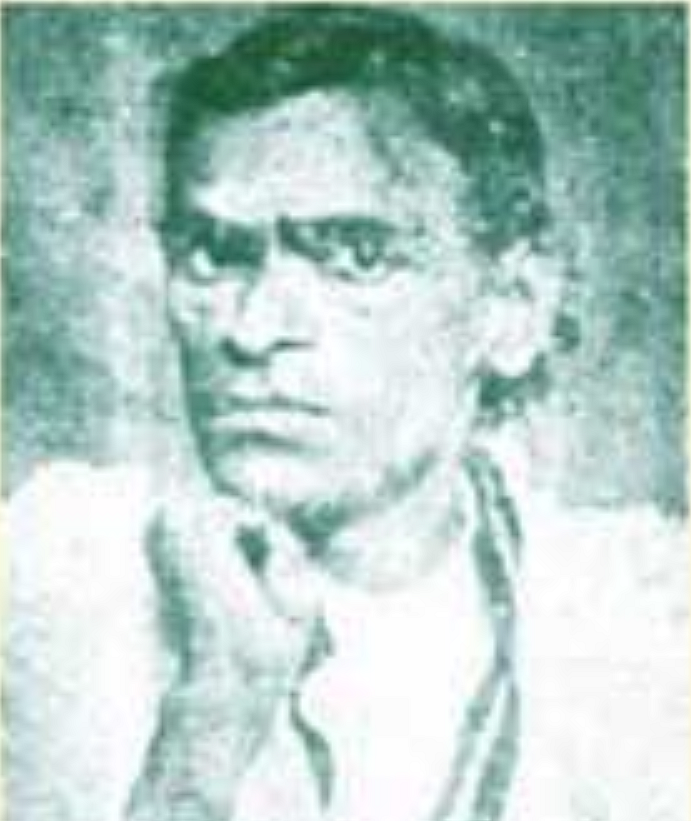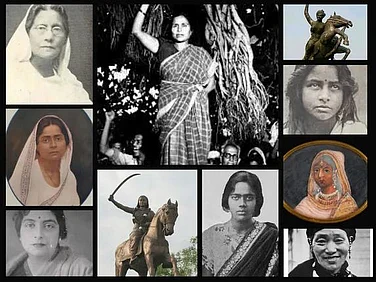India got its independence after countless freedom fighters and leaders sacrificed their lives, but this journey of struggle was not only about the prominent leaders but also about the locals and regionals who fought bravely against the British to support India’s independence movement. They gave everything to ensure their availability during the struggle period, demonstrating extraordinary courage, resilience, and assurance. However, these unsung heroes were overshadowed by the prominent leaders who were at the front and were more well-known historical characters. Their memories should be treasured and honoured for decades to come as a reminder of the sacrifices made for India's independence.
Lesser-Known Freedom Fighters Who Shaped India's Independence
Discover the inspiring story of Khudiram Bose, the youngest martyr of India's freedom struggle, who sacrificed his life at 18 for the nation's independence.

Lesser-known heroes in the freedom movement
Gangadin Mehtar

Gangadin Mehtar, or Gangoo Baba, was a bold and strong name in the history of independence. Belonging to a marginalized community and a resident of Kanpur (Lucknow), Gangoo Baba was a mid-level junior commissioned officer serving under Nana Saheb Peshwa in Kanpur. Known for his fearless attitude toward the British, he killed around 200 British soldiers single-handedly in the Battle of 1857. Through his active participation in the struggle, he instilled fear in the British, and they were desperate to capture him and kill him as they recognized him as a major threat to their control in the region. Unfortunately, he was captured by the British troops and executed in 1859 by the British. Despite facing severe discrimination, his contributions underscored the inclusive nature of the freedom struggle, highlighting that people from all walks of life contributed to the fight for independence.
Tripur Kumaran

Tripur Kumaran (4 October 1904- 11 January 1932), identified as ‘Kodi Kaatha Kumaran’, means the flag protector known for his unwavering patriotism and involvement in the freedom struggle. Born and brought up in Tamil Nadu in 1904, Kumaran was inspired by Mahatma Gandhi’s non-cooperation movement. He was the founder of the Desh Bandhu Youth Association, where he motivated young Indians to participate in the freedom struggle against the British. Kumaran became a symbol of resistance during a protest march, he held the Indian national flag (which was banned by the British) high and was brutally beaten by them. He was fatally injured in the protest while protecting the flag and didn’t let the flag touch the ground. His martyrdom at the age of 27 made him a revered figure in the freedom struggle, especially in the state of Tamil Nadu.
Birsa Munda

A prominent tribal figure Birsa Munda (15 November 1875- 9 June 1900), led the Munda rebellion in the late 19th century against British exploitative land policy rule. Birsa Munda holds a significant place in the hearts of tribal people even now, as he has contributed and sacrificed his life while fighting for their rights and restoring the traditional way of life, which was under threat from British-imposed laws. Though often overlooked in mainstream narratives, Birsa is revered as a hero who fought for tribal justice and independence. He died at the very young age of 25 in Ranchi Jail. Though he lived a very short period, Munda was believed to have mobilized the tribal population against the British and compelled colonial officials to enact laws safeguarding tribal land rights.
Garimella Satyanarayana

Garimella Satyanarayan (14 July 1893- 18 December 1952) from Andhra Pradesh instilled a sense of patriotism amongst the Indians through his writing skills; he wrote influential poems and songs that motivated and inspired the masses against British rule. Satyanarayan played a significant role in the freedom struggle through literary talent; his most famous song, "Maakoddee tella Doratanamu”, (We don’t need this white rule) fueled the Indians with a strong sense of nationalism and encouraged them to stand with the freedom fighters in the struggle for independence. Despite facing imprisonment and harassment from the British, his dedication made him a revered personality in the region. His other epic work was “Maa Kokila Teera”, which became a rallying cry for freedom fighters in Andhra Pradesh. His contribution through literary works will remain motivating for generations.
Kanaiyalal Maneklal Munshi

Kanaiyalal Maneklal Munshi, a.k.a. K. M. Munshi (30 December 1880- 8 February 1971) was known for his multifaceted role in the freedom struggle. Munshi was the founder of Bhartiya Vidya Bhawan, an institution aimed at providing education and promoting Indian culture. He was an active participant in most of the protests and major movements, including the Salt Satyagraha, the Quit India Movement, the non-cooperation movement and the Bardoli Satyagraha. Despite facing multiple arrests for actively participating in the national movement, his contributions extended to post-independence India, where he played a key role as a member of the Constituent Assembly in drafting the Indian Constitution and selecting the national flag.
Conclusion
Without these unsung heroes, the struggle for freedom would be a little more difficult. The freedom struggle was a collective effort of countless of individuals from diverse backgrounds, regions, religions, and societies. While we only remember the prominent names in the freedom struggle, we should not forget how these unsung heroes have fiercely fought in the struggle for freedom and their crucial role in challenging the British, organizing resistance, and motivating others to join hands and come together in this journey of independence. By honouring these unsung heroes, we pay a small tribute from our hearts for the huge sacrifices that they have made in shaping the course of India’s history and inspiring future generations to carry forward their legacy of courage, determination, and selfless service.
-
Previous Story
 Vande Mataram: The Revolutionary Anthem Born From Bankim Chandra Chatterjee's Vision
Vande Mataram: The Revolutionary Anthem Born From Bankim Chandra Chatterjee's Vision - Next Story













.png?w=200&auto=format%2Ccompress&fit=max)
.png?w=200&auto=format%2Ccompress&fit=max)




